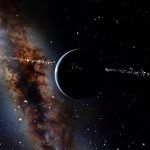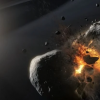ASTRONOMERS DISCOVER APPARENT “OCEAN PLANET” 100 LIGHT-YEARS FROM EARTH0
- From Around the Web, Space
- August 29, 2022
THE NEXT STEP? AIM THE JAMES WEBB AT IT.

THE NEXT STEP? AIM THE JAMES WEBB AT IT.

Astronomers have detected a cloud of dust the size of a whole star, 330 light-years away. Its cause? A colossal smash-up between two exoplanets that were still just forming.

Astronomers have discovered that as many as a quarter of stars like the Sun eventually consume their own planets, in findings which suggest that they have a chaotic and destructive history.

Some planets in the habitable zone are not good for life, but others outside it might be

Our solar system is home to some unusual places we could potentially migrate to if Earth were to die.

Astudy has found that exoplanets orbiting red dwarf stars may not be as badly affected by stellar radiation as scientists had previously suspected.

The more we learn about exoplanets, the more we realize the universe is stranger than we ever knew.

New telescope images may provide the first view of moons forming outside the solar system.

Astronomers estimate 29 habitable planets are positioned to see Earth transit and intercept human broadcasts

It could be a milestone on the path to detecting life on other planets: Scientists under the leadership of the University of Bern and of the National Centre of Competence in Research (NCCR) PlanetS detect a key molecular property of all living organisms from a helicopter flying several kilometers above ground. The measurement technology could also open up opportunities for remote sensing of the Earth.



